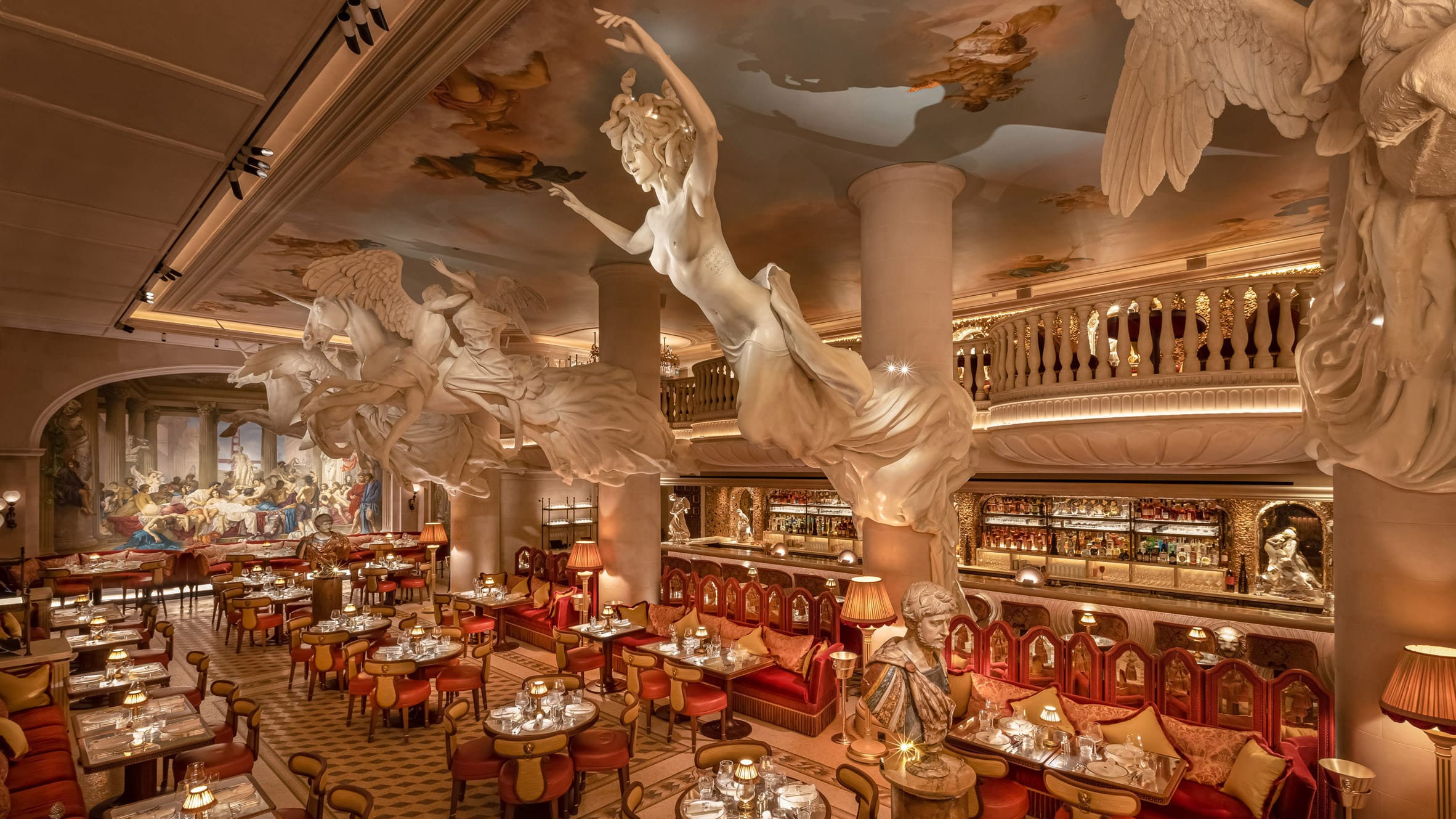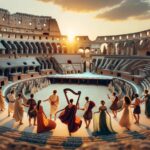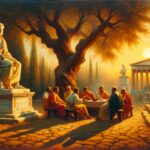Step into a world where art, myth, and unrestrained revelry intertwine—the captivating realm of bacchanal paintings. From Titian’s vibrant masterpieces to the thoughtful compositions of Poussin and Picasso’s modern interpretations, these artworks offer a thrilling journey through history and the human experience. Explore the complexities of pleasure, abandon, and the enduring allure of ancient celebrations.
The Wildest Party in Art History
Ever dreamed of stepping into a painting? Bacchanal paintings offer just that—a glimpse into legendary parties overflowing with wine, music, dance, and mythological figures. Imagine an ancient Roman festival honoring Bacchus, the god of wine and revelry, a scene of pure, unadulterated joy. These aren’t mere depictions of merrymaking; they’re rich tapestries woven with symbolism, offering insights into how different cultures and eras viewed pleasure, excess, and the power of nature. [https://www.lolaapp.com/antiquita] From vibrant colors and dynamic movement to captivating characters and hidden meanings, bacchanal paintings offer a feast for the senses and the mind.
Exploring Artistic Interpretations Through Time
The Renaissance, a period of artistic rebirth, saw artists like Titian capture the energy of Bacchanalian festivals. His iconic Bacchanal of the Andrians is a whirlwind of activity, a snapshot of a party at its peak. Imagine a lush island setting teeming with dancing figures, musicians, and revelers lost in a wine-induced haze. Titian masterfully blends mythological figures and symbols with human celebration, offering a glimpse into the Renaissance perspective on the joy of life and the allure of the natural world.
Later, artists like Nicolas Poussin offered a different perspective. His A Bacchanalian Revel before a Term presents a more structured and harmonious celebration. The figures are thoughtfully arranged, suggesting an underlying order amidst the revelry. Poussin seems to explore the balance between nature and civilization, adding a layer of intellectual intrigue to the party scene.
Fast forward to the 20th century, and Pablo Picasso throws the Bacchanal theme into his modernist blender. Bacchanal with an Acrobat explodes with vibrant colors and angular shapes, a reimagining of ancient myths through a distinctly modern lens. [https://www.lolaapp.com/bacchus-olympics] This demonstrates the timeless nature of these stories and their capacity for continuous reinterpretation.
Decoding the Symbols of Revelry
The recurring elements in Bacchanal paintings—wine, music, dance, mythological creatures—are more than just decorative motifs. They’re symbols laden with meaning. Wine represents the intoxicating power of nature and the pursuit of pleasure. Music and dance embody joy, release, and connection. Mythological figures, like Bacchus himself and the mischievous satyrs, often represent the spirit of the festival and the duality of human nature—our capacity for both joy and excess. Some researchers suggest that these paintings may even offer clues about ancient rituals and social structures, providing a glimpse into the beliefs and practices of past civilizations.
What Defines a Bacchanal in Art?
Bacchanals in art aren’t just pretty pictures; they’re snapshots of wild parties thrown in honor of Bacchus. Think of them as ancient Roman celebrations overflowing with symbolic meaning, telling stories of liberation, pleasure, and the interplay between desire and social norms. These artistic celebrations often teem with mythological creatures like satyrs and Silenus, Bacchus’s jovial tutor. Nudity, symbolizing a connection to the natural world and uninhibited expression, is a common theme. It’s interesting to note that the real-life bacchanals that inspired these artworks were eventually banned by the Roman Senate for their perceived excesses. Perhaps this is why artists continued to depict them, using mythology as a coded language to explore themes they couldn’t express openly otherwise.
Over time, famous artists like Titian, Poussin, and Picasso have each put their unique spin on the bacchanal theme, offering diverse interpretations of this enduring subject. It’s important to acknowledge that our understanding of bacchanals, both historical and artistic, continues to evolve. Scholars continue to debate the precise meanings and significance of these works, and new research may further illuminate their complexities. The table below summarizes some key examples:
| Artist | Painting | Characteristics |
|---|---|---|
| Titian | Bacchanal of the Andrians | Opulent, energetic, showcasing the height of revelry |
| Nicolas Poussin | A Bacchanalian Revel before a Term | Structured, balanced, suggesting order within the chaos |
| Pablo Picasso | Bacchanal with an Acrobat | Modern, abstract interpretation, highlighting the theme’s enduring appeal |
What Happened During a Bacchanal?
Imagine a party so wild and free that modern music festivals pale in comparison. Bacchanals, ancient Roman festivals honoring Bacchus, were legendary for their unrestrained revelry. These weren’t just casual gatherings; they were multi-day celebrations filled with music, dance, and copious amounts of wine. Revelers adorned themselves with ivy and vine leaves, Bacchus’s signature plants, adding to the mystical and liberating atmosphere. These festivals often took place in beautiful natural settings like lush groves or secluded islands, emphasizing the connection between humans and the natural world.
Bacchanals were not solely about hedonism; they also held spiritual significance. The Romans saw Bacchus as a symbol of life, death, and rebirth, and participating in these rituals was a way to connect with the divine and experience a sense of transcendence. Historical accounts of bacchanals vary, with some portraying ecstatic joy and spiritual release, while others suggest that things could sometimes get out of hand, fueled by wine and freedom from social norms. Ongoing research continues to shed light on these rituals and their varied interpretations.
The Story of The Bacchanal of the Andrians
Titian’s Bacchanal of the Andrians isn’t just a visually stunning artwork; it’s a narrative rich with myth, pleasure, and artistic innovation. Commissioned by Alfonso I d’Este, Duke of Ferrara, for his private chambers, this painting offers a glimpse into a world of fantasy and celebration. Set on the mythical island of Andros, a place associated with abundance and revelry, the scene teems with details that bring this mythical world to life. Titian’s masterful use of color and composition creates a sense of warmth, energy, and joyful abandon.
Intriguingly, Bacchus himself is absent from the scene, prompting various interpretations. Some scholars suggest this absence enhances the painting’s mystique, while others posit that his presence is implied, woven into the very fabric of the celebration. The figures in the painting may represent specific mythological characters, further enriching the narrative. For example, the woman pouring wine might be Ariadne, connecting the scene to themes of love, loss, and rediscovered joy. The Bacchanal of the Andrians, a testament to Titian’s artistic genius, continues to captivate and inspire, inviting viewers to explore the complexities of human nature and the enduring power of myth.
Ongoing research and scholarly discussion surrounding The Bacchanal of the Andrians ensure that this masterpiece will likely remain a source of fascination for generations to come. Its rich symbolism and ambiguous elements leave room for multiple interpretations, making it a truly engaging and thought-provoking work of art.
- Georgia Platform: A Southern Strategy, 1850s - March 31, 2025
- How many weeks is 40 days: Quick Conversion Guide for Accurate Results - March 31, 2025
- How many feet is 300 meters? 984 Feet: Understand Length Conversions Easily - March 31, 2025

















2 thoughts on “Bacchanal Paintings: An Intoxicating Journey Through Art and Revelry”
Comments are closed.